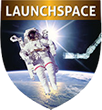Course Details
Course Summary
This course explains satellite technologies and systems to beginners and experts. Discussions involve examples of how satellite companies got started, the impact of patent litigation, and developed heritages of suppliers. We begin with basics and build a complete system story. You are exposed to critical fundamentals and principles of design and trade-off processes. There is a complete overview of orbit mission requirements, followed by the basic design principles needed to build a complete story of why satellites take on their configurations and how they operate. Case studies permit easy understanding of the systems selection criteria, relationships and interfaces which are all part of the design process. Important subsystems will be addressed and their key relationships and interface requirements discussed. Topics include launch vehicle selection, ascent to orbit maneuvers, launch windows, telemetry and command functions, power, thermal, propulsion subsystems, structures, attitude determination and control, payload interfaces, and performance parameters and systems engineering. This material is recommended for professionals interested in current processes and trends in satellite bus systems for commercial, scientific and other applications while acquiring a broader background in the design, development, and use of spacecraft.
Course Materials
Include extensive notes and reference materials.
Who Should Attend
Engineers interested in current processes and trends in satellite bus design. Professionals interested in acquiring a broader background in the design, development, and use of spacecraft. Space policy and decision makers in government and industry. End users of satellites.
What You Will Learn
Recent developments in spacecraft bus technologies. Fundamental design and performance comparisons between GEO and LEO constellations. Fundamental bus design processes and examples. Satellite subsystems, their functions and interactions. Fundamentals of launch system selection and availability of launchers. Ascent to an orbital slot, attitude maneuvers, orbit maintenance and stationkeeping requirements for various types of satellites.
Course Outline
- Introduction and Review of Fundamentals.
Glossary of basic terms and definitions. Review of mathematical principles. Laws of Kepler and Newton. Coordinate systems and Earth-orbit geometry and fundamentals. Survey of satellite types and requirements. - Fundamentals of Launch Vehicles, Orbits and Orbit Establishment.
Introduction to ascent trajectories and launch vehicle requirements. Basic relationships of orbital dynamics. Maneuvers needed to transfer to a final mission orbit. Complete profile of ascent-to-final orbit. The impact of the launch vehicle and launch site on the satellite design. - Elements of Satellite Bus Design.
Definitions of bus and payload elements. The configuration trade-off selection tree and preliminary design process. Identification of satellite subsystems and their functions. Subsystem interactions and interfaces. Impact of heritage on the design process. Methods of analysis, simulation and test. - Introduction to Satellite Stabilization Techniques and Configuration Principles.
Historical background. Definitions and explanations of attitude dynamical phenomena. The concept of stability for spinning satellites and stabilization for non-spinning satellites. Energy dissipation effects. Survey of all attitude control system types. Attitude sensors and actuators. Momentum precession and adjustment techniques, reorientation, attitude determination, and acquisition requirements. - On-Orbit Operations.
Unique orbits and their properties. Attitude disturbances and automatic attitude control. Orbital perturbations and correction requirements. LEO constellations and GEO platforms. - Spacecraft Subsystems and Their Functions
Identification of all satellite bus subsystems. Functions and interactions. Interface requirements. Examples of hardware types and suppliers. Significant anomalies and failures. Survey of current and future satellite on-board devices. - Integrated Software Design Systems.
- Spacecraft Examples and Course Summary.
